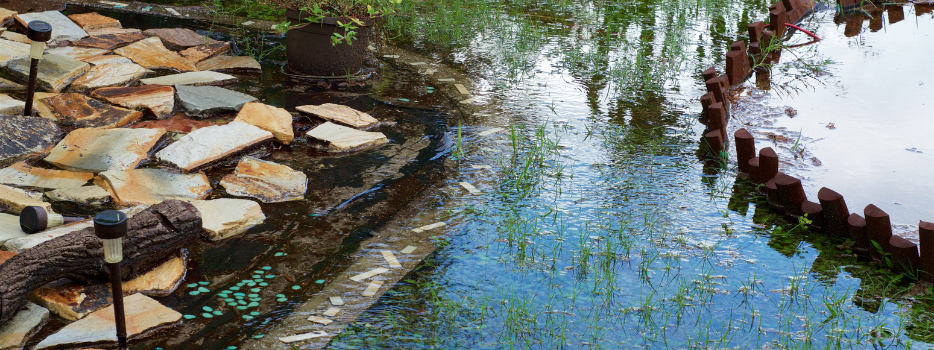March, April, and May are typically heavy volume months for sump pump claims. Significant temperature fluctuations in the late winter and early spring months can result in a lot of pooling water and saturated soil. Additionally, heavy rain can easily overwhelm drain tiles and sump pump crocks. These factors can result in a spike of sump pump claims.
Unlike other appliances, a sump pump quietly does its job, and you probably don’t pay attention to it. It’s usually found in your basement and its primary function is to keep your basement dry. Below is information on:
- Water damage facts
- How a sump pump works
- Types of sump pumps
- Benefit of a sump pump
- Maintenance tips
- Claim scenario
- Insurance policy coverage
Water damage facts
- Estimates indicate that 98% of basements in the U.S. will eventually experience water damage.
- Water damage claims cost insurance companies approximately $20 billion annually.
- The average insurance claim for water damage is $11,098.
How a sump pump works
A sump pump collects ground water in a sump tank, also known as a basin, crock, or pit. When the ground water fills the tank to a certain level, the float travels up a float rod and activates a switch causing the pump motor to turn on. The motor then removes the water from the tank and discharges it away from your house.
Types of sump pumps
Submersible
This type of sump pump is the most common and it’s installed during home construction. The pump is covered inside the tank.
Non-submersible (Pedestal)
This type of pump consists of a motor and a hose. The motor is installed above the basement floor. The hose is connected to the motor and then routed into the sump tank. This pump is less expensive and can be installed in any home at any time.
Benefit of a sump pump
A sump pump can protect your home for a relatively inexpensive cost, and it can last 15-30 years, so it won’t need to be replaced regularly. A sump pump protects your home by:
Preventing flooding.
Periods of heavy rain can cause water to accumulate around the base of your foundation. A sump pump will prevent the water from entering and flooding your basement. In addition, if you experience a burst pipe in your basement, a floor drain may not be enough to eradicate the water. A sump pump may help push this water out, minimizing the amount of standing water.
Reducing dampness and mold growth.
Standing water can lead to mold growth. Mold can be harmful to your health and your house. Keeping your basement dry can prevent growth.
Preventing fires.
Water entering your basement can cause appliances to short-circuit which could lead to an electrical fire.
Maintenance tips
Each spring, follow these sump pump maintenance tips to ensure yours works properly.
Remove the cover.
Check the tank for debris, such as mud, rocks, or gravel.
Flush the system.
Ensure proper pump operation by flushing out the system with water from a hose or bucket. When the pump turns on, listen for strange sounds. The pump should run smoothly. If it doesn’t, that could signal worn or damaged parts. Contact a local plumber immediately for service.
Inspect the float.
As water fills the tank, ensure the float travels freely on the float rod.
Inspect the discharge pipe.
Before major rain, be sure the discharge hose is free from debris, such as mulch, mud, stones, or rodent nests. Ensure that the discharged water runs away from your foundation.
Inspect the check valve.
Ensure your sump pump has a 3/16-inch relief hole in the pipe between the pump and the check valve. This prevents check valve vapor locks and greatly extends the life of your pump.
Claim scenario
Several years ago, West Bend policyholders moved into their newly constructed home. After a rainstorm, they went down to their basement and stepped off the last stair into the water. Pea gravel from the construction process was found in the sump pit. Unfortunately, the sump pump sucked in the pea gravel causing it to be destroyed. Luckily, their basement was unfinished and most of their personal belongings were stored in totes, resulting in minimal damage. Remember, it is important to inspect your system on a regular basis even in new houses.
Insurance policy coverage
An insurance policy may not provide coverage for sump pump overflow/sewer backup. You can add coverage to a West Bend policy. Sump pump overflow/sewer backup provides coverage if your sump pump overflows or your sewer backs up, causing water damage to possessions in your basement. Four coverage limits give you the flexibility to carry just the right amount of coverage for your finished or unfinished basement.
Ask your insurance agent if you’re adequately covered.
This article is intended for general educational and illustrative purposes only and should not be construed to communicate legal or professional advice. Further, this article is not an offer to sell insurance. Please consult with your licensed insurance agent for specific coverage details and your insurance eligibility. All policies are subject to the terms, conditions, limitations, definitions, and exclusions contained therein.
Click on the infographic image below to download a PDF version.
Sources:
Property Damage water damage statistics.







